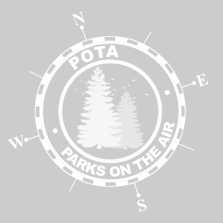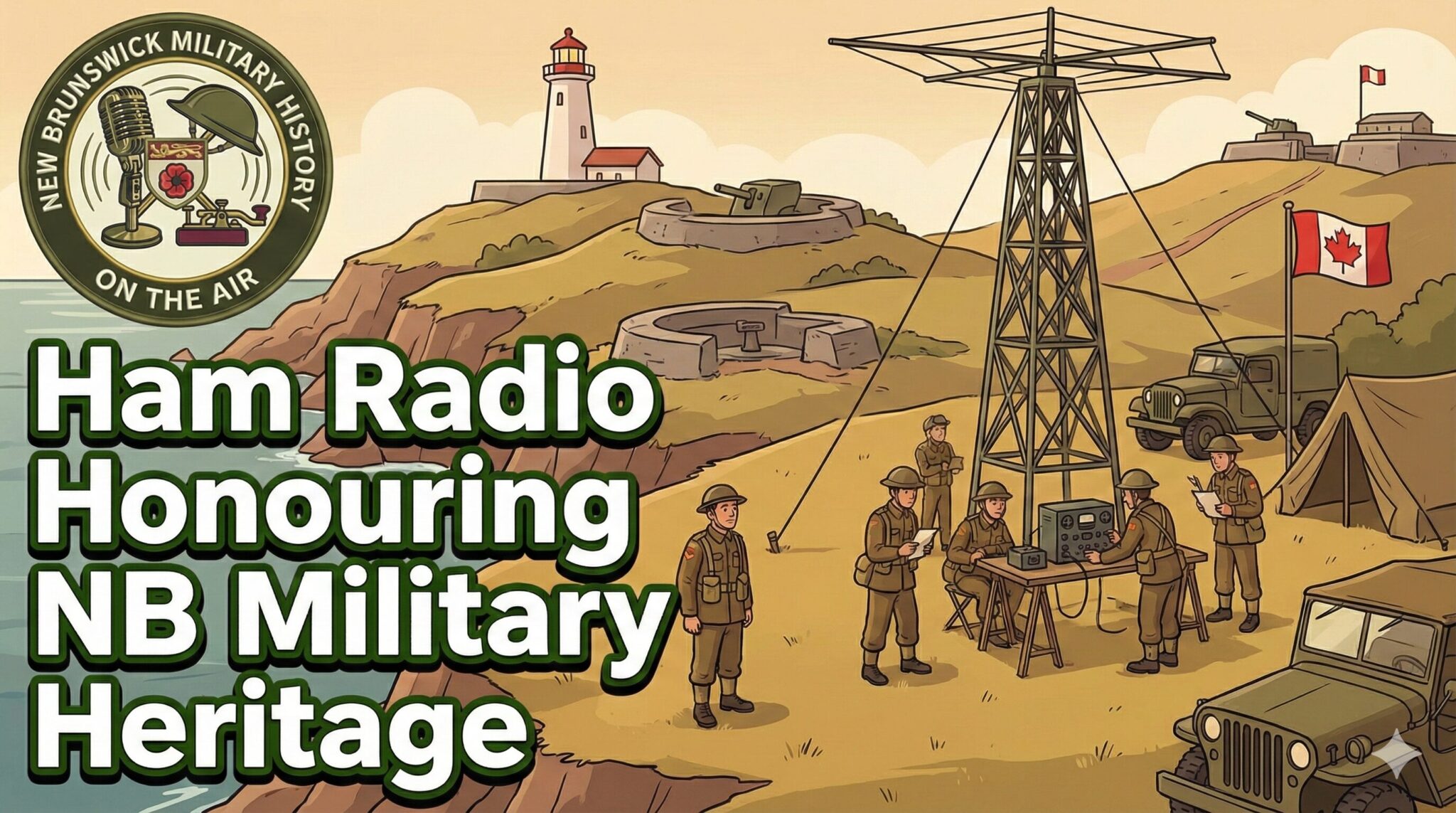10 Practical Tips To Make Your Next Parks On The Air Activation A Huge Success: Easy Ways To Improve Your Experience
Ready to take your Parks on the Air experience up a notch? Whether you're an old hand or just dipping your toes in, activating Canadian parks is a mix of adventure, learning, and connecting with others.
With a little planning and some straightforward strategies, you can make your next POTA activation much smoother, more fun, and honestly, just plain better.
This guide lays out ten practical tips for Canadian parks and portable ops. You’ll get ideas on prepping gear, picking a good spot, handling unpredictable weather, and maybe even snagging some DX outside North America.
Just a few tweaks and you’ll be set to log more successful contacts and soak up your time in the great Canadian outdoors.
Key Takeaways
- Good preparation is key for operating a portable in Canadian parks.
- Having the right gear and setup increases your chances of successful contacts.
- Focus on efficient activation and enjoy working new stations, including DX.
Understanding Parks On The Air Activations
Parks on the Air (POTA) encourages amateur radio operators to grab their gear and head outside to make contacts from national, provincial, and local parks. You enjoy nature, test your radio chops, and meet other hams.
What Is Parks On The Air?
Parks on the Air, or POTA, is an award program for amateur radio folks. The idea is to make contacts from different public parks and conservation areas—it’s about both portable radio fun and enjoying wild places.
Pick from thousands of eligible national and provincial parks across Canada. Setting up in the fresh air and making contacts from these spots counts toward awards for you and the "hunters" who work you.
The rules are simple: use legal amateur privileges, operate inside the park, and keep a log of your contacts. Each park has a unique code to ID your activation. Once you’re in, you can join events, chase rare parks, and tap into a friendly community. If you want the nitty-gritty, check out the Activator Guide.
How Activations Work
To activate a park, set up a portable amateur radio station inside an approved park and try to make at least ten contacts to qualify. You must plan your gear, power, antennas, and logging method.
First, pick your park from the POTA list, ensure you can operate there, and figure out your route—some places are way out there. Set up inside the park boundary on activation day and get your antenna up safely.
Use software or a paper log to track call signs, times, and frequencies. After you hit the contact minimum, upload your logs to POTA for credit.
Some folks like to hit a few parks in a single day—these "multi-park expeditions" can ramp up your contact count and keep things interesting. More details are available at Activating Parks On The Air In Canada.
Planning Your Successful Activation
Smart planning starts with determining where you’re going and when the bands will be hot. Spending a bit of time up front means fewer wasted trips and more contacts in your log.
Researching Park Details
Before you head out, double-check the park’s accessibility and any rules. Some parks need permits, close early, or don’t let you drive everywhere. Make sure amateur radio is allowed and look for special guidelines.
Use official park sites, recent trip reports, and maps to scope the terrain and entry points. Print a paper map too—cell coverage can be spotty, even in 2025.
A quick table for park prep:
| Task | Reason |
|---|---|
| Confirm open dates/hours | Avoid locked gates |
| Note entry/parking spots | Find the best setup location |
| Check weather forecast | Bring suitable gear |
The Activator Guide - Parks on the Air is worth a look for more on site prep.
Checking Band Conditions
Propagation changes daily with solar activity, weather, and time. Check band reports and forecasts before you go. The 40m and 20m bands are usually your best bets for Parks on the Air in Canada.
Plan for daylight hours when signals travel best. Bring an antenna that covers multiple bands so you can switch if one isn’t working out.
VOACAP, solar data, and local forums can help you guess what’ll work. Watching the POTA website for other operators’ spots gives you a sense of open frequencies.
Always have a backup band in mind. Being flexible helps you rack up more contacts and makes things less frustrating.
Gathering The Right Equipment
The right gear is the backbone of a good Parks on the Air activation. What you bring shapes your setup and helps you deal with whatever the outdoors throws at you.
Essential Radio Gear
Pick a radio that’s both portable and reliable. For solo trips, lightweight HF rigs like the Yaesu FT-818 or Elecraft KX2 are popular—easy to carry, don’t eat batteries, and work.
Pack a mic, a Morse key if you use one, and all the cables. Most folks log with a laptop or paper logbook—POTA requires logs, so bring a waterproof notebook or tablet as backup.
Headphones or earbuds help cut down noise, especially in busy parks. Protect your radio from the elements with a dry bag or hard case. Any firmware updates or settings changes? Do them at home, not in the field.
Portable Power Solutions
You’ll need solid power. Most people go with one of three:
- Lithium Iron Phosphate (LiFePO4) batteries are light, safe, and last long.
- Sealed Lead Acid (SLA) batteries – cheap but heavy and bulky.
- Solar panels – handy for longer stays or topping up batteries.
Pick your battery size based on your radio’s draw and how long you want to operate. For QRP, a 6–12 Ah LiFePO4 battery gives you hours of runtime.
Don’t forget extra cables, fuses, and connectors. A little voltmeter or battery monitor is handy for monitoring voltage. Double-check cable polarity and test everything at home.
Antenna Options
Your antenna matters—a lot. Verticals like compact whips or telescoping antennas go up fast and are great if space is tight or the ground is rocky. End-fed half-wave (EFHW) and random wire antennas are favourites for their quick setup and broad coverage.
Got more space? Try a dipole or portable mast for better efficiency, especially on lower bands. Bring enough coax to reach your antenna spot.
A lightweight tuner is smart unless your antenna is spot-on for your frequencies. Use guy lines, stakes, or bungee cords to keep things upright—windy parks can be a pain. If you want more antenna tips, check this POTA equipment guide.
Prepping For The Big Day
Good prep saves you headaches and keeps your activation rolling. Testing your gear and packing smart can make the whole experience smoother and less stressful.
Testing Equipment Before Departure
Run through all your radio gear well before you leave. Set up your transceiver, power supply, batteries, and antennas just like you will in the field. That way, you catch any issues and ensure the connectors, cables, and mic are good.
Try making a quick contact from home to confirm your radio works. If you’re using batteries, check the voltage after a charge and look for damage. Test all cables and accessories—one missing adapter can ruin your day.
Keep a printed checklist. Jot down everything: radio, antenna, coax, logbook, keys, mic, fuses, extra cables. Tick them off as you test and pack. If you want more details, there’s a good activator guide.
Packing And Transport Tips
Organize your stuff in bins, soft bags, or sturdy cases. Put fragile gear—radios, batteries—in padded boxes. Keep logging essentials like water, first aid, or snacks handy.
Label your gear or use colored bags to speed up setup and teardown. Store the things you use most on top. If you’re hiking, use a comfy backpack and keep it light—bring what you’ll need.
Pack basic tools and spare parts: multi-tool, extra wire, tape, and ties. Paper maps and a compass are smart if cell coverage stinks—seriously, don’t skip them. The activator guide has more on this. Good packing means less stress and more fun.
Setting Up On Site
Showing up prepared means skipping the headaches and getting right to the fun part: making contacts and enjoying the outdoors.
Choosing The Best Location
Find a clear, open spot inside the park boundaries, away from crowds and hazards. Double-check with the Parks on the Air activator guide to ensure you’re in the right place. Pick a higher spot—it can help your signal, especially if you’re running low power.
Look for shelter from wind or rain, but skip setting up under power lines or dense trees—they can mess with your signal. Follow park rules, don’t block trails, and leave wildlife alone.
Use a checklist for your gear: table, chair, batteries, logbook, and water. Setting up near your car is handy for quick shelter or grabbing extra gear, but always stay clearly inside the park boundary.
Antenna Setup Techniques
Pick an antenna that fits your space and what you want to do. For fast setups, a telescoping vertical or a wire dipole on a fibreglass mast is a go-to for many folks.
If you have a little extra time, play around with different heights. Lifting your antenna higher can make a noticeable difference in your signal, even if it feels like a hassle.
Make sure your antenna is secure, especially if the wind’s up. Guy lines, tent stakes, or even a handy tree branch can do the trick.
Always toss a few extra cords and a mallet in your kit for staking. You’ll thank yourself later.
Take a second to check the antenna’s direction. On HF, aim it for the best coverage based on where you hope to make contacts.
Don’t forget to route your feed line somewhere safe—bright tape on anything low to the ground helps keep people (and you) from tripping.
Before you start calling CQ, listen on your intended frequency. That quick check can reveal noise or interference and save you a headache.
Making The Most Of Operating Time
When you’re in the field, every minute counts. Good logging habits and staying focused help you rack up more contacts and keep the activation running smoothly.
Managing Your Logging Efficiently
Keep on top of your logbook, especially if you’re chasing a pile of contacts. Digital logging programs or apps on your phone, tablet, or laptop make things faster and cut down on missed entries.
If you’re old-school and like paper logs, set up your sheet beforehand. Columns for time, call sign, frequency, mode, and signal report let you jot things down quickly without squinting later.
Double-check the time on a reliable watch or digital clock. Getting the time right really matters, especially with Park-to-Park (P2P) contacts or if you’re operating near UTC midnight. Messing up the time can create headaches when you upload logs.
Here’s a quick checklist for logging:
- Prep your log layout before you start
- Double-check time and date settings
- Use clear handwriting or fast, reliable software
- Confirm each entry before moving on
Station Operating Practices
If your setup is organized, you’ll spend less time fumbling with gear and more time making contacts. Practice setting up and tearing down at home so you know how long it takes—you won’t waste precious park time figuring it out on the fly.
Keep essentials like your mic, logbook, and spare cables within easy reach. If you use headphones or an external speaker, check every connection before you start operating.
Watch your battery levels and power source so you don’t get surprised. Nothing kills the mood like a dead radio halfway through a good run.
Comfort matters more than you’d think. A decent chair or mat makes a long session easier on your back. Check out these top Parks on the Air activation tips for more advice.
Maximizing Contacts And Having Fun
Packing in more contacts during a Parks on the Air activation isn’t just satisfying—it’s genuinely fun. Planning, some friendly banter, and solid communication go a long way.
Promoting Your Activation
Letting folks know about your upcoming activation makes it easier for others to find you. Post your planned date, time, and frequency on the POTA website’s activator page.
Share details on social media groups, local ham club forums, or the DX cluster. Mention your callsign, park reference, and what modes you’ll be running—SSB, CW, digital, whatever you’re into.
Be clear about your start time and watch out for time zone or UTC mix-ups. Getting the time right makes logging and P2P contacts a whole lot easier.
You might be surprised how much more activity shows up when others know to look for you at a specific park.
Working Pile-Ups
Call CQ in a popular park, and suddenly you’ve got a pile-up. Stay calm and work through the stations one by one. Use clear phonetics and keep a steady pace—it helps everyone and cuts down on repeats.
Log each contact as you go. That way, you won’t forget anyone, even when things get hectic.
If people start talking over each other, politely ask everyone to hold on, then call for specific partial callsigns you caught. Patience goes a long way here.
Pile-ups can initially feel overwhelming, but with a little practice, they’re somewhat exciting.
Engaging With Other Operators
Connecting with other operators isn’t just about exchanging reports. If another activator or chaser calls, take a second for a quick, friendly chat—it makes things more enjoyable for everyone.
Hear someone activating another park? Go for that Park-to-Park contact and share your reference number. It adds a little thrill and gives both of you extra credit.
Recognize a familiar voice? Acknowledge them, toss a weather or location update, or thank chasers for their reports. It keeps the vibe upbeat and builds a sense of community.
Sometimes it’s worth leaving a thank you note or feedback in local groups or donation boxes if the park allows. Small gestures matter and help keep things positive, as mentioned in tips for park relations.
Handling Weather And Safety Concerns
Staying safe and comfortable during a Parks on the Air activation means being ready for unpredictable weather and watching yourself and your gear. A little planning now can save you a lot of trouble later.
Preparing For Changing Weather
Park weather can flip on you fast, especially in spring and fall. Always check the forecast, but pack for rain, wind, or chilly temps no matter what the app says.
Bring a waterproof jacket, hat, extra layers, and maybe a tarp or shelter for your spot. Keep your gear dry—waterproof cases or bags for radios, logs, and batteries are a must. Some folks use plastic bins or dry sacks.
Hand warmers and sun protection (think sunscreen, lip balm, and a hat) belong in your kit. If you can, pick a site with natural cover like trees or a picnic shelter for bonus protection.
Watch the wind and watch for weather changes—dark clouds, sudden gusts, that sort of thing. If a thunderstorm’s coming, be ready to secure antennas, cover your equipment, and take shelter fast.
Carrying a small weather radio or using an app for real-time updates is a lifesaver.
Personal And Equipment Safety
Staying safe isn’t just about the weather. Visibility and awareness matter—set up away from busy paths, and flag any wires or trip hazards with bright tape or cones.
Stick to the “Leave No Trace” principle: pack up your feedlines and trash, and leave the park as you found it. The official POTA activator reference really stresses this.
Have a first aid kit handy and know where the closest washrooms, park exits, or help points are. Let a friend know your plans in case you need help or don’t check in as expected.
Handle your power setup carefully—use proper fuses, manage batteries safely, and never short-circuit or overcharge them. If you’ve got a generator, run it safely, away from your operating area, and never inside a tent or enclosed space.
After The Activation: Next Steps
Once you pack up, a little follow-up will make sure your activation counts and will help you improve for next time. Submitting your log properly and reviewing what worked (or didn’t) makes future outings smoother.
Submitting Your Log
Get your log submitted promptly so you get credit and your hunters get their confirmations. Double-check for accuracy—callsigns, times, frequencies, and park reference codes must all be right.
Most POTA logging software spits out the file you need. If you went with paper, transfer it to the required electronic format (like ADIF) before uploading.
Log in to the Parks on the Air website, hit the submission page, and follow your region’s upload instructions. If you’re in Canada, local forums or coordinators can help if you get stuck.
After you submit, watch for confirmation emails or messages. If you get feedback about missing info or errors, respond quickly so your activation gets counted. For more requirements, check the Activator Guide for Parks on the Air.
Reflecting On What Worked Best
Grab a notebook and scribble down some quick thoughts about your gear, the spot you picked, and how the bands behaved. Did your antenna setup do the trick, or are you still unsure?
Maybe a different power source or a taller mast would've made things smoother. It's worth being honest with yourself—reflection's the only way to improve next time.
Try making a simple list, just split it into what worked and what didn't:
| What Worked Well | Needs Improvement |
|---|---|
| Fast setup | Antenna position |
| Reliable contacts | Battery life |
| Comfortable seating | Shelter on rainy days |
Chat with other operators or skim tips from folks who've been there, like those in activator experiences. Even a two-minute review now might save you a headache next time you head out.






